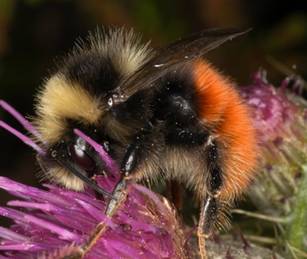Dove Stone Partnership

Dove Stone Partnership
What is the Project?
This is a new partnership project between the RSPB and United Utilities to deliver restoration of SSSI blanket bog and associated moorland edge habitats including upland oak woodland and scrub. Another important part of the project is to raise awareness of the ecosystem services provided by blanket bog, for example: water quality and storage, carbon storage, and wildlife, through engaging with people.
Where is it?
Dove Stone reservoir sits just to the south of Saddleworth Moor and north of the Longdendale Valley.
What is the Purpose?
- To restore favourable condition to SSSI habitats.
- To increase upland woodland and scrub cover.
- To diversify moorland edge habitats.
- To raise awareness of upland catchment management, and ecosystem services and associated wildlife.
- To enhance habitats for upland bird species.
What Habitats will Benefit?
Blanket bog
Moorland edge mosaics including upland heath and in-bye acid grassland
Upland woodland and scrub
What Species will Benefit?
Golden Plover, Dunlin, Curlew, Ring Ouzel, Peregrine, Merlin, Raven, Short Eared Owl, Water Vole.
What has already been Achieved?
United Utilities, as part of their Sustainable Catchment Management Plan (SCaMP) project initiated large scale blanket bog restoration at this site, as these before and after pictures demonstrate.
RSPB have added to this with the installation of 1000 heather bale dams and 100 turf dams to block drainage ditches and help to re-wet blanket bog. Four sphagnum reintroduction trial plots have also been established.
In addition, 25 ha of heather cutting has taken place, 4 ha of new native woodland creation is underway (including conversion from conifers), plus work to diversify the species interest on 2.3 ha of acid grassland.
What is Planned?
The main purpose of this project is to achieve favourable recovering condition over 2,500 ha of blanket bog,  and to enhance moorland fringe habitats; and by so doing, to increase the numbers of breeding upland birds to 2 pairs of Peregrine, 2 pairs of Ravens, 2 pairs of Merlin, 5 pairs of Short-eared Owl, 50+ pairs of Golden Plover, 35 pairs of Curlew, 15 pairs of Dunlin, and 10+ pairs of Ring Ouzel. It is also hoped that this work will increase the numbers of Water Vole, Bilberry Bumblebee (pictured) and Green Hairstreak butterfly.
and to enhance moorland fringe habitats; and by so doing, to increase the numbers of breeding upland birds to 2 pairs of Peregrine, 2 pairs of Ravens, 2 pairs of Merlin, 5 pairs of Short-eared Owl, 50+ pairs of Golden Plover, 35 pairs of Curlew, 15 pairs of Dunlin, and 10+ pairs of Ring Ouzel. It is also hoped that this work will increase the numbers of Water Vole, Bilberry Bumblebee (pictured) and Green Hairstreak butterfly.
Additional work includes:
- Development of an ecosystem condition index.
- Awareness-raising through ‘Date with Nature’ and ‘Access to Nature’ projects and through regular on-site engagement with visitors.
- Hydrological and botanical monitoring of moorland restoration.
Who is Involved?
RSPB and United Utilities lead the project with the support of Natural England, Peak District National Park Authority, Forestry Commission, farmers, and Oldham Metropolitan Borough Council, plus numerous volunteers and various grant aids.
Work on site is being carried out by RSPB Wardens and United Utilities Wildlife Wardens who also help to explain the importance of the site to visitors. A large number of volunteers will help with practical and survey work, while professional contractors do some of the more complex habitat restoration work.
How can I find out more?

